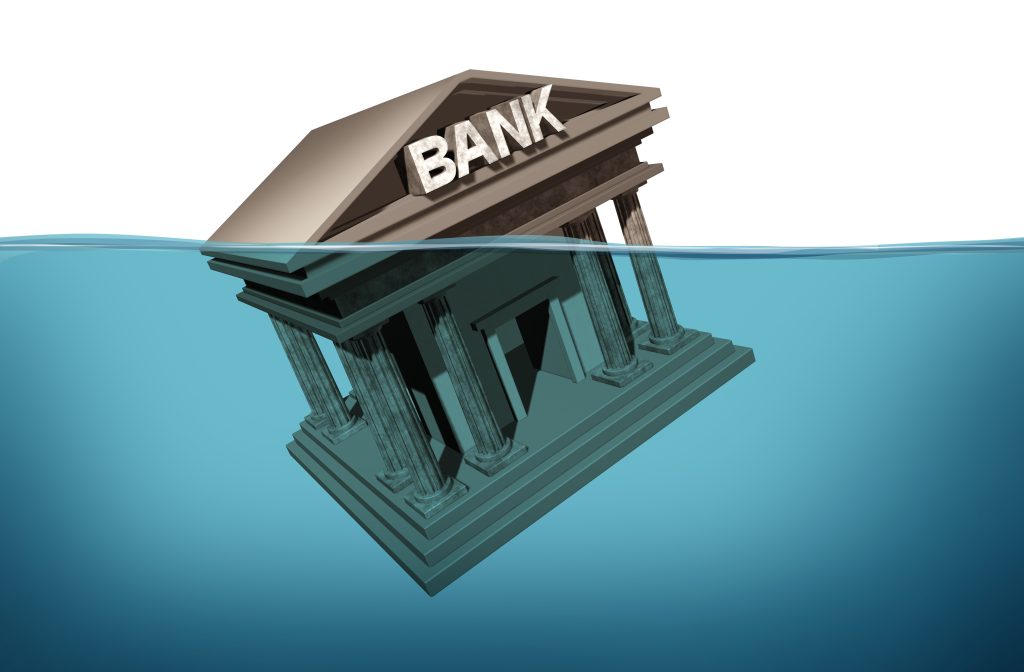This isn’t over yet.
Last week after Silicon Valley Bank went poof in a matter of hours, I wrote that this financial catastrophe is just getting started:
“Like Lehman Brothers in 2008, SVB is just the tip of the iceberg. . .”
Within days, several other banks were on the verge of collapse. And now today, of course, major banks in the United States (including JP Morgan) are rallying to save the troubled First Republic Bank.
The amazing thing about this rescue plan is that JP Morgan, Bank of America, etc. have pledged to deposit $30 billion of their customers’ funds at First Republic.
In other words, the big Wall Street banks have promised to transfer their customers’ money to another bank that everyone acknowledges is insolvent.
This is not only extremely unethical, it’s a major violation of the big banks’ fiduciary obligations to safeguard their customers’ savings.
It also strikes me as borderline illegal; JP Morgan can do what it likes with its own money. But it shouldn’t bail out a failed bank using its customers’ money.
This bank panic has also spread beyond the US.
Over the weekend in Switzerland, banking giant Credit Suisse had to be taken over. And I can only imagine the calamity that will ensue if depositors start to scrutinize the weak, under-capitalized banks in Italy.
(Perhaps that’s why Italy’s Economy Minister, Giancarlo Giorgetti, said last week that he hopes European authorities will intervene if there are more bank runs.)
Anyhow, let’s pretend for a moment that the bank runs are over for now. There are still a lot of risks lurking in the financial system, and it’s easy to understand why.
Last week I explained that Silicon Valley Bank had been insolvent for months. And they didn’t keep it a secret. SVB provided the Federal Reserve and FDIC with regular financial reports on their solvency and capital.
And they published their annual financial report back in mid-January, announcing their insolvency to the world.
For two months, nobody seemed to care about SVB’s massive unrealized losses. Then, practically overnight, a worldwide banking crisis began.
This sudden, dramatic change in market behavior is the critical issue here; in the field of ‘chaos’ mathematics this is known as bifurcation– the point at which a small change causes an entire system to shift from stable to unstable.
That’s what happened with SVB; the global financial system was perfectly stable until about 10 days ago, when SVB made a minor announcement that they had sold some bonds at a loss.
Then suddenly everything fell into chaos. It was a minor change that led to major instability.
But bifurcation isn’t limited to commercial banks– there are plenty of other potential bifurcation events lurking out there.
Think about it– if investors and market participants can suddenly shift from CONFIDENT to PANICKED about commercial banks, why can’t they react the same way about sovereign governments, central banks, or even businesses?
With hundreds of billions of dollars in its own unrealized losses, even the Federal Reserve is insolvent.
(I’ve written numerous times about this, stating that the Fed “will eventually engineer its own insolvency.” Well, mission accomplished.)
At the moment, however, the market doesn’t seem to care that the Fed is insolvent… just like no one cared about Silicon Valley Bank’s insolvency back in January.
But who can guarantee that investors won’t suddenly care about the Federal Reserve’s horrific balance sheet? Just imagine the consequences that would trigger.
The same goes for US government finances. After all, the Treasury Department’s own annual report shows a NET financial position of MINUS $34 trillion. Sure, today, nobody really cares. Can we be so sure they won’t care next month? Or next year?
The larger point is that these potential bifurcation events are everywhere, and the system can shift from stable to unstable very quickly.
There are also key issues beyond these bifurcation points.
One obvious consequence of the SVB fallout is that banks are going to have to slash their loan and bond portfolios… starting now. This is normal practice when banks are in trouble.
Remember that, according to the FDIC, banks across the US have already suffered more than $600 billion in unrealized losses on their bond portfolios. And now that this has turned into a mini-crisis, banks will likely respond by slashing their lending and investing activities in order to conserve cash.
That’s bad news for most companies; even healthy, successful businesses often rely on loans, credit lines, and bond issues to fund their operations or major investments.
Businesses are already having to deal with the negative impact of significantly higher rates. But if banks suddenly reduce lending, that’s going to leave countless businesses in a really tough spot.
That means canceled projects, job cuts, and possibly financial distress, forcing many businesses to raise capital by issuing new shares at fire sale prices.
Objectively speaking these distressed equity opportunities can be incredibly lucrative for investors who are willing to pounce– the chance to load up on high quality assets at deeply discounted prices.
But this distressed equity bonanza might not last.
I’ve argued before that the Federal Reserve will soon find itself between a rock and a hard place, i.e. they’ll have to choose between inflation versus financial catastrophe. And we’ve just witnessed the opening measures to financial catastrophe.
It will probably take them time to figure out; after all, it took the Fed more than a year before they finally realized inflation was a problem. And it’s probably going to take them time to realize that their rapid interest rate hikes are creating financial catastrophes.
But once they figure it out, the Fed is likely going to start cutting interest rates again (and allowing higher rates of inflation) in order to prevent full blown economic catastrophe. And that will put an end to the distressed equity bonanza.
So keep an eye out for this one, because it might not last long.









